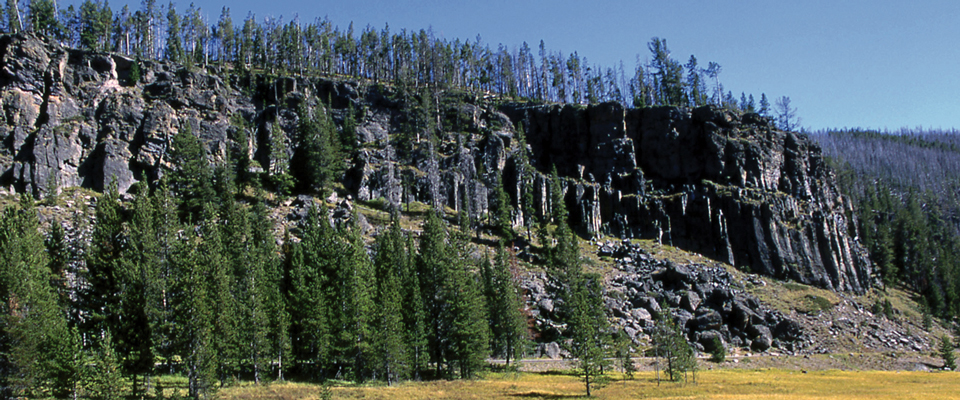Humans (and, evidently, other primates as well) have been use stone tools a long time. These artifacts are one thing that is very well documented in the fossil record. It’s pretty hard to destroy stone tools even if you mean to, so they tend to be preserved.
The other interesting thing that has been left behind are the traces of stone working, and places where stone was quarried. Nowadays molecular analysis can tell us where a stone came from.
These analyses have shown that humans carried good stone tools across continents, and also transported raw stone long distances to make tools. Sometimes people travelled to sources of stone, in others they traded for the stone.
This spring Jim Robbins discusses Obsidian Cliff at Yellowstone, which is a gigantic rock formation with huge amounts of really useful obsidian conveniently located [3]. The archaeology shows that humans have been harvesting the stone and making stone tools for 10,000 years and more [1]. It is, as Robbins puts it, “Humanity’s Tool Shed”.

X-ray fluorescence studies have shown that rock from this deposit was used by people for hundreds of kilometers around [1]. It’s the best stuff, so folks came to get it or traded for it. For example, a hundred of kilos of Yellowstone Obsidian have been found in a mound in Ohio, dating 2000 years ago. No one knows exactly how it arrived there. Did they visit Yellowstone over 2500 km away? Or did people trade the stone along a chain, all the way to Ohio?
This is so neat. I had never heard of the Obsidian Cliff itself.
And I hadn’t realized how easy it has become to do X-ray fluorescence. When I was a lad, we had to bring samples in to rare and really expensive labs to get this information, if we could get it at all. Now you can buy a handheld XRF scanner and analyze samples in the field. (A quick search shows dozens of such devices on offer! Cool!)
Wow!
- Douglas H. MacDonald, Elizabeth A. Horton, and Todd A. Surovell, COUGAR CREEK: QUANTITATIVE ASSESSMENT OF OBSIDIAN USE IN THE GREATER YELLOWSTONE ECOSYSTEM. American Antiquity, 84 (1):158-178, 2019. https://www.cambridge.org/core/article/cougar-creek-quantitative-assessment-of-obsidian-use-in-the-greater-yellowstone-ecosystem/9AEA212042CA3436EF89C7C5134B5160
- National Park Service. Obsidian Cliff. 2023, https://www.nps.gov/yell/learn/historyculture/obsidiancliff.htm.
- Jim Robbins, Obsidian Cliff: Humanity’s Tool Shed for the Last 11,500 Years, in New York times. 2023: New York. https://www.nytimes.com/2023/03/20/science/yellowstone-indigenous-people-obsidian.html
